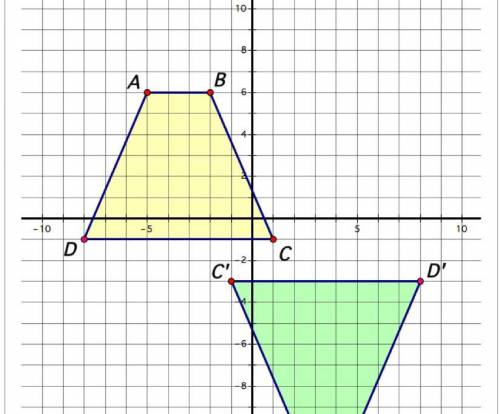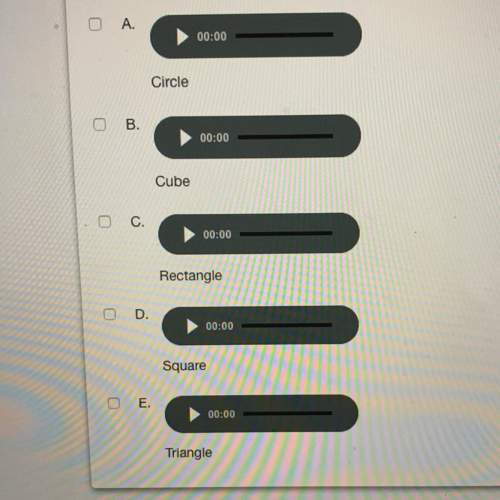
Mathematics, 13.09.2021 14:00 loudermilkb117
Which describes the rigid transformation shown in the figure above?
(x, y) —> (x, -y-4)
(x, y) —> (y+4, -x)
(x, y) —> (x, y+4)
(x, y) —> (-x, -y-4)


Answers: 3


Another question on Mathematics

Mathematics, 21.06.2019 18:50
7. the area of the playing surface at the olympic stadium in beijing isof a hectare. what area will it occupy on a plan drawn to a scaleof 1: 500?
Answers: 3

Mathematics, 21.06.2019 23:00
Jane’s favorite fruit punch consists of pear, pineapple, and plum juices in the ratio 5: 2: 3. chapter reference how much punch can she make if she has only 6 cups of plum juice?
Answers: 1

Mathematics, 21.06.2019 23:30
Scenario: a rectangular plot of ground is 5 meters longer than it is wide. its area is 20,000 square meters. question: what equation will you find the dimensions? note: let w represent the width. options: w(w+5)=20,000 w^2=20,000+5 (w(w+5))/2=20,000 w+2(w+5)=20,000
Answers: 1

Mathematics, 22.06.2019 00:20
Match the following reasons with the statements given to create the proof. 1. do = ob, ao = oc sas 2. doc = aob given 3. triangle cod congruent to triangle aob vertical angles are equal. 4. 1 = 2, ab = dc if two sides = and ||, then a parallelogram. 5. ab||dc if alternate interior angles =, then lines parallel. 6. abcd is a parallelogram cpcte
Answers: 2
You know the right answer?
Which describes the rigid transformation shown in the figure above?
(x, y) —> (x, -y-4)
Questions


Biology, 24.09.2021 22:20

Advanced Placement (AP), 24.09.2021 22:20

Mathematics, 24.09.2021 22:20

Mathematics, 24.09.2021 22:20



Mathematics, 24.09.2021 22:20



Mathematics, 24.09.2021 22:20





Mathematics, 24.09.2021 22:20

History, 24.09.2021 22:20


Health, 24.09.2021 22:20




